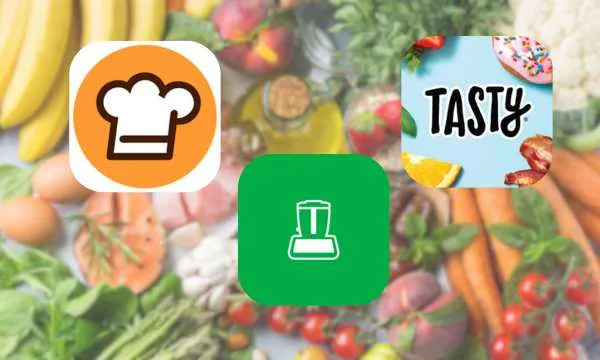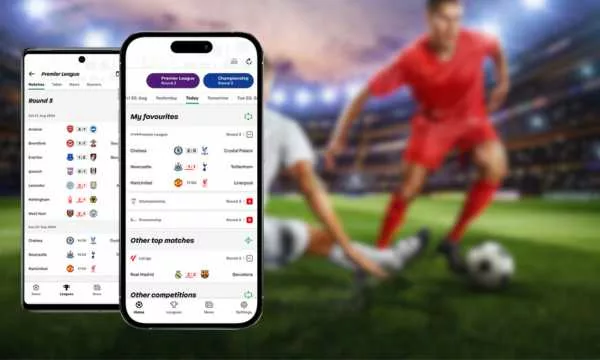Blood pressure is one of the most important indicators of our cardiovascular health.
Regular monitoring is a key point to prevent heart problems and maintain a healthy lifestyle.
In addition, blood pressure apps offer convenience and ease of tracking health, allowing people to monitor their blood pressure regularly and effectively.
Today we will explore through a Complete Guide how to use these apps efficiently, from choosing the best app to interpreting the results.
Introduction to Blood Pressure Apps
In today’s fast-paced world, convenience is essential. Blood pressure apps offer a practical solution to track your cardiovascular health in the comfort of your home or on the go.
They have become popular due to their ease of use and ability to record and track your readings over time.
The Importance of Regular Monitoring
Before we dive into the world of apps, it is essential to understand why regular blood pressure monitoring is so vital. Blood pressure is the force with which blood flows through the arteries and is composed of two measurements: systolic pressure (when the heart beats) and diastolic pressure (when the heart is at rest between beats).
Keeping blood pressure within healthy levels is essential for the proper functioning of the heart and blood vessels. Hypertension (high blood pressure) is a significant risk factor for heart disease, strokes, and other health problems.
Regular blood pressure monitoring helps to identify early health problems, allowing for preventive measures to be taken. This puts the control of your health in your hands.
Choosing the Right App
The first step to using blood pressure apps is to choose the right app for your needs. With so many options available, it is important to consider some key points:
Reliability and Accuracy
When choosing an app, look for those with good ratings and user reviews. Well-rated apps generally offer more accurate and reliable measurements.
Features and Compatibility
Make sure the app offers features that meet your needs, such as measurement charts, measurement reminders, and compatibility with medical devices, such as Bluetooth blood pressure monitors.
Ease of Use
The app interface should be intuitive and easy to use. A complicated app can make the measurement process difficult.
Examples of Popular Apps
To help you get started, here are the four most popular blood pressure apps:
Setting Up the App
After choosing the appropriate app, follow these steps to set it up on your device:
- Download and Install: Search for the app in your phone’s app store, download and install.
- Sign Up: Most apps will ask you to create an account. Provide the necessary information, such as name, age, and gender.
- Health Information: Some may request additional health information about you, such as medical history and pre-existing conditions. This helps the app personalize your measurements and analysis.
- Connecting with Medical Devices: If you have a compatible Bluetooth blood pressure monitor, follow the app’s instructions to connect it. This allows for more accurate measurements.
With the app set up, you are ready to start measuring your blood pressure regularly.
Performing Accurate Measurements
The accuracy of blood pressure measurements depends on how they are performed. Here are some tips to ensure accurate measurements:
Proper Position
Sit in a comfortable chair with your back supported and your feet on the floor. Keep your arm at heart level, supported on a flat surface, such as a table.
Time of Day
Try to measure your blood pressure at the same time every day, preferably in the morning before taking coffee or medication.
Relaxation
Relax for a few minutes before measuring. Avoid talking or moving during measurement.
Multiple Measurements
Take two or three measurements with a one- to two-minute interval between them. Record all readings. With these practices, you will ensure more accurate and consistent measurements.
Interpreting the Results
When measuring your blood pressure, you will find two numbers, for example, 120/80 mmHg. The top number (systolic) represents the pressure in the arteries when the heart beats, and the bottom number (diastolic) is the pressure in the arteries when the heart is at rest between beats.
Normal values
- Systolic pressure: Less than 120 mmHg
- Diastolic pressure: Less than 80 mmHg
Prehypertension
- Systolic pressure: 120-139 mmHg
- Diastolic pressure: 80-89 mmHg
Stage 1 hypertension
- Systolic pressure: 140-159 mmHg
- Diastolic pressure: 90-99 mmHg
Stage 2 hypertension
- Systolic pressure: 160 mmHg or higher
- Diastolic pressure: 100 mmHg or higher
It is important to understand these numbers and discuss them with a healthcare professional if they are outside of the normal range.
A single elevated reading is not necessarily cause for concern; it is the pattern of readings that matters.
Setting up reminders and alarms
Keeping a consistent routine for measuring blood pressure is essential for effective monitoring. Set up reminders and alarms in the app to help you remember to measure your blood pressure regularly. Choose convenient times that fit into your daily schedule, such as in the morning or evening.
Storing and tracking data
One of the advantages of apps is their ability to store and track data over time. With each measurement, the app records the information and creates a history.
This allows you to track your progress and identify any trends over time.
By revisiting your history, you can observe how your blood pressure responds to different situations, such as changes in diet, exercise, or stress levels.
This is valuable for adjusting your lifestyle in the pursuit of healthy blood pressure.
Sharing data with healthcare professionals
Blood pressure apps often offer the option to share your records with healthcare professionals. This can be done easily by emailing a report or exporting data to a format that your doctor can analyze.
Sharing this information with your doctor can help in the management of your cardiovascular health. Your doctor will be able to identify any concerning trends and make appropriate recommendations.
Tips for a healthy lifestyle
In addition to blood pressure monitoring, maintaining a healthy lifestyle is essential for cardiovascular health. Here are some general tips:
- Nutrition: Maintain a diet rich in fruits, vegetables, whole grains, and lean protein. Reduce sodium intake and avoid processed foods.
- Physical activity: Get regular exercise. Aerobic exercise, such as walking, cycling, and swimming, is especially beneficial for blood pressure.
- Stress management: Find healthy ways to cope with stress, such as meditation, yoga, or relaxing activities.
- Avoid tobacco and excessive alcohol: Smoking and excessive alcohol consumption can raise blood pressure. Avoid them.
- Maintain a healthy weight: Maintaining a healthy body weight can help to reduce blood pressure.
- Limit caffeine: If caffeine affects your blood pressure, limit your intake.
Limitations and safety considerations
Although blood pressure apps are valuable tools, it is important to recognize their limitations. They do not replace regular medical checkups.
If you have concerns about your blood pressure or cardiovascular health, consult a qualified healthcare professional. Additionally:
- The accuracy of measurements can vary between apps and devices.
- Blood pressure can fluctuate throughout the day, so it is important not to worry about a single elevated reading.
- Not all apps are approved by health regulatory bodies, so choose carefully.
Additional resources
In addition to apps dedicated to blood pressure measurement, there are other resources and devices that can complement your health monitoring, such as fitness tracking apps and health tracking devices.
Important Tip
Measuring your blood pressure regularly is a smart way to care for your cardiovascular health. With blood pressure apps, you can track your blood pressure in a convenient and effective way.
However, remember that these apps are complementary tools to regular medical checkups. If you have any concerns about your blood pressure or cardiovascular health, do not hesitate to seek guidance from a qualified healthcare professional.
By combining regular monitoring with a healthy lifestyle and proper medical care, you are on the right track to keeping your blood pressure under control and ensuring a healthier life.


